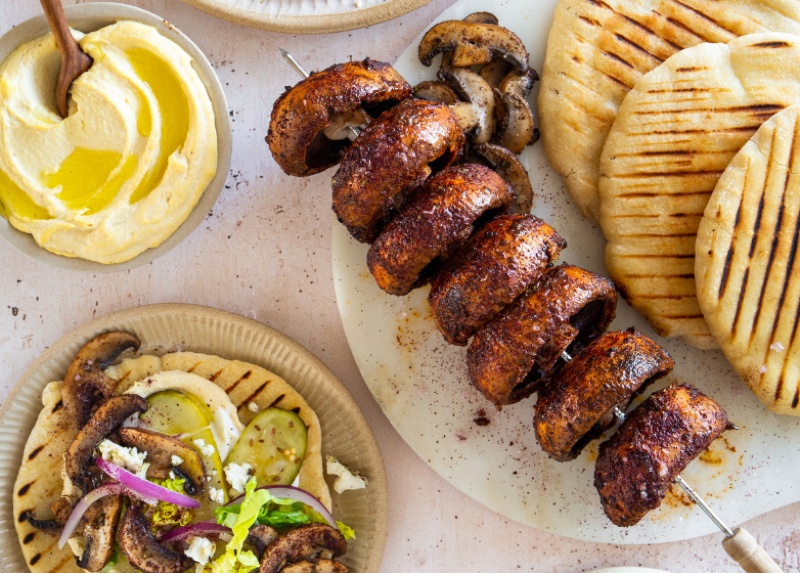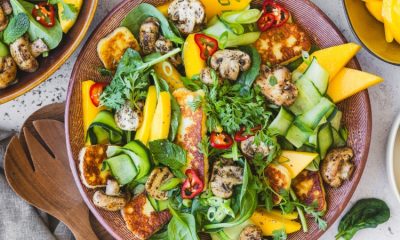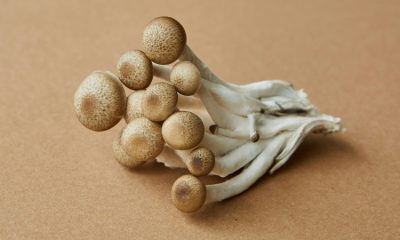Food
Make Fungi Your Go-To Fun Guy for Spring & Summer
Add some portobello pazazz to your summer diet.

Fresh cultivated mushrooms are the bomb, an entire world of flavour and nutrition in miniature form! For years, fresh cultivated mushrooms have been tagged as a major food trend by those in the know, not only for their great taste but incredible nutritional and health benefits too.
This is because fresh mushrooms have a lot going for them. They are globally acknowledged as a superfood, have a desirable meaty texture, are Houdini-level versatile for different dishes, and their rich, earthy umami flavour has reached full cult status.
But, while mushrooms are considered and eaten as a vegetable, mushrooms are really their own special category: fungi.
Unfortunately, because the global nutrition message (and very rightly) is to eat the rainbow for maximum health, mushrooms have been informally categorised as a “white vegetable” and often become a forgotten source of nutrients.
The truth, though, is that mushrooms contribute a suite of under-consumed nutrients. They are a good source of niacin, pantothenic acid, selenium, copper, and an excellent source of riboflavin.
The renowned Harvard School of Public Health notes that “the more interesting properties of mushrooms might actually be their non-nutritive plant substances – polysaccharides, indoles, polyphenols, and carotenoids in which cell and animal studies have shown antioxidant, anti-inflammatory, and anticancer effects.” These make mushrooms great overall immune boosters.
Chefs and researchers love mushrooms, but so do the environmentalists, as mushrooms are a brilliantly sustainable crop when it comes to efficient agriculture.
Everyone’s favourite bon vivant, Stanley Tucci, in fact decided on his Mushroom Frittata as the one dish he’d pass down to his children to keep his family heritage alive.
Much of fresh mushrooms’ current celebrity, though, has to be down to the upswing in plant-based eating.
South Africans love meat and while meat proteins are a healthy part of any diet, many South Africans are guilty of piling on meat with little room for other nutrients on their plates.
As long as you’re meeting the minimum of the Recommended Dietary Allowance (RDA) for daily protein intake (0.8 grams of protein per kilogram of body weight) you can start experimenting with replacing additional meat protein with something else. Think one steak and one chargrilled Portabello mushroom at a braai instead of a mountain of meat, or your beloved grandmother’s meatball recipe made with half minced meat and half finely chopped fresh mushrooms – still packed with flavour, but much better for your waistline and heart health.
_______________________________________________
Portobello Shawarma

Serves 4
INGREDIENTS
Mushrooms: 8 large portobello mushrooms
1 tsp sumac
1 tsp ground cumin
1 tsp smoked paprika
1 tsp ground coriander
1 tsp dried oregano
3 Tbsp olive oil
3 Tbsp lemon juice
200g double cream plain yoghurt
1 garlic clove, finely grated
Sumac salt:
1 Tbsp sumac
1 Tbsp flaky sea salt
To serve:
100g feta, crumbled
½ red onion, sliced finely
4 large pita breads
Shredded lettuce
Large pickles / gherkins, sliced
Olive oil, for cooking
Salt and pepper, to taste
METHOD
- Preheat braai to a medium high heat.
- Combine all the mushroom seasoning ingredients into a spice paste mix.
Brush all over the mushrooms.
Thread the portabellos onto a large metal skewer. - Place on the braai and cook, rotating often, until the mushrooms are tender and charred on all sides.
- Whisk yoghurt and garlic together.
- Mix sumac and salt together.
- Just before the mushrooms are cooked, place pitas onto the braai and toast lightly.
- Serve the mushroom shawarma by slicing it thinly off the skewer.
- Serve onto braaied pitas swished with garlic yoghurt and top with lettuce, red onion, feta and pickles. Sprinkle everything with sumac salt and enjoy!
Find out more about how mushrooms can help you, along with some amazing mushroom recipes, on the South African Mushroom Farmers Association website.














